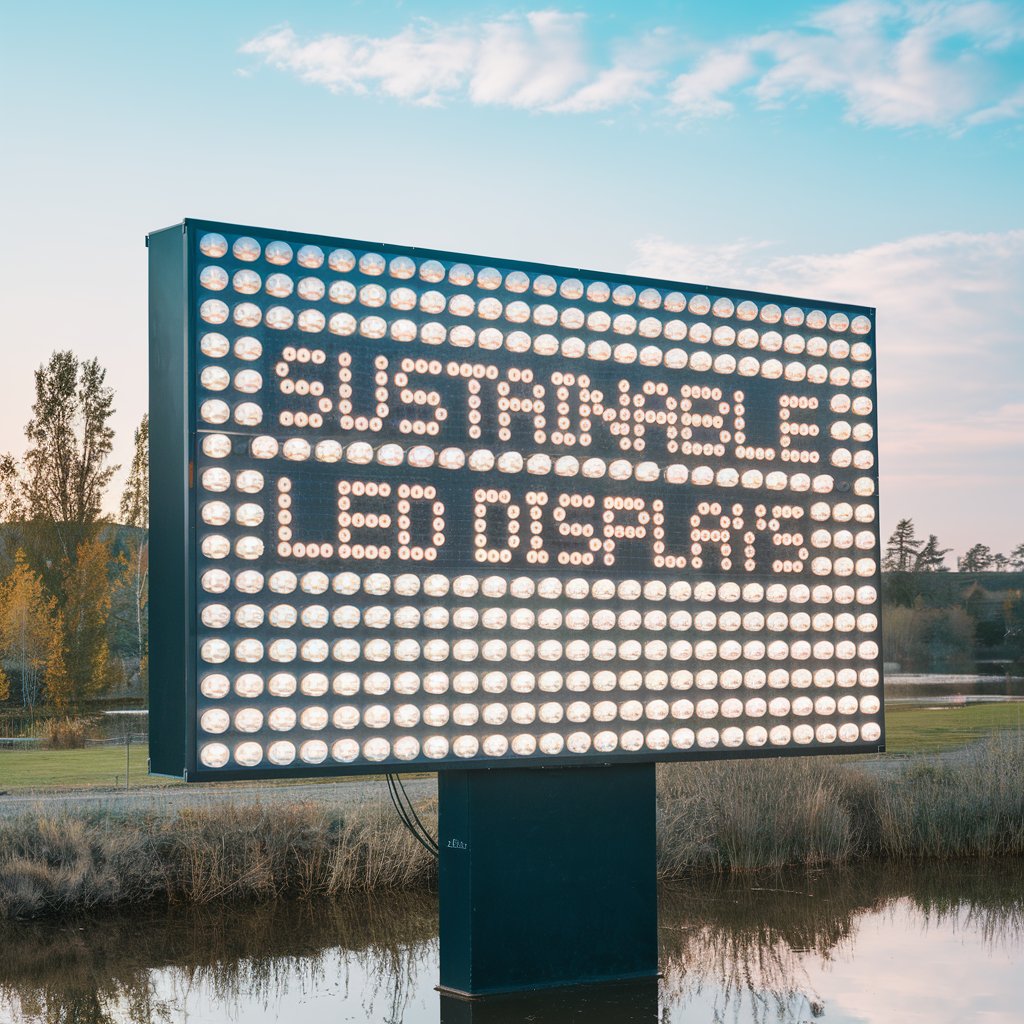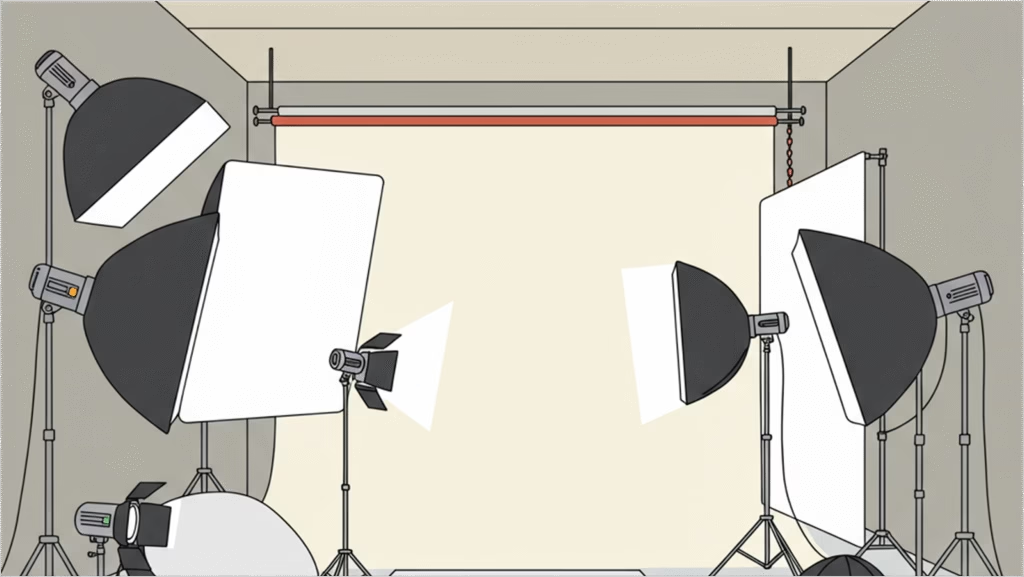In an era where sustainability is becoming increasingly important, businesses and industries are rethinking their choices, from the materials they use to the energy consumption of their products. One industry that has embraced this shift is digital signage, specifically with the use of sustainable LED displays. These innovative displays offer a greener alternative to traditional digital signage by being more energy-efficient, environmentally friendly, and durable. As companies strive to reduce their carbon footprint, partnering with a LED display supplier who offers sustainable solutions is now more crucial than ever.
This article will explore the reasons why sustainable LED displays are a greener option, the benefits of choosing eco-friendly technology, and the long-term impact on both businesses and the planet.
1. Lower Energy Consumption
One of the most significant advantages of sustainable LED displays is their ability to significantly reduce energy consumption compared to other display technologies like LCD or traditional fluorescent signage. This lower energy usage has immediate and long-term environmental benefits, as well as cost savings for businesses.
- Energy-Efficient Technology: LEDs (Light Emitting Diodes) are inherently more energy-efficient than other light sources, requiring less power to operate. This is because they convert more of the energy they use into visible light and less into heat, making them more efficient and reducing the overall electricity required to run large displays.
- Reduced Carbon Footprint: By using less energy, sustainable LED displays contribute to lowering the carbon footprint of businesses. For companies focused on corporate social responsibility, transitioning to energy-efficient technology like LED displays is a practical step toward meeting environmental goals and reducing greenhouse gas emissions.
- Longevity of LEDs: LEDs have a much longer lifespan than traditional light sources, which means they need to be replaced less frequently. This longevity reduces the need for manufacturing new displays, thus minimizing waste and the energy used in production.
2. Recyclable and Environmentally Friendly Materials
In addition to their energy efficiency, sustainable LED displays are often made from recyclable materials that reduce environmental impact. The components used in these displays, such as aluminum frames and certain plastics, are more environmentally friendly than the materials used in older technologies.
- Recyclable Components: Many LED displays are designed with recyclability in mind. When a display reaches the end of its life, various parts, including the metal casings and circuit boards, can be recycled. This reduces the amount of waste that ends up in landfills and lowers the demand for new raw materials.
- Non-Toxic Materials: Unlike traditional fluorescent or neon signs, LED displays do not contain harmful substances such as mercury, which can be dangerous for both the environment and human health. This makes them a safer option not only during use but also when they are disposed of.
- Durability: Sustainable LED displays are built to last, often performing reliably for tens of thousands of hours. This durability means fewer replacements and less electronic waste, contributing to a more sustainable lifecycle for the display.
3. Adaptive Brightness for Lower Energy Use
One feature that sets sustainable LED displays apart from other technologies is their ability to adjust brightness levels according to environmental conditions. This adaptive brightness technology not only enhances the viewing experience but also contributes to energy savings.
- Automatic Brightness Adjustment: Many LED displays are equipped with sensors that automatically adjust the brightness based on ambient light levels. For instance, during the day, the display may operate at full brightness to be clearly visible in direct sunlight. However, at night or in lower-light conditions, the display dims, reducing energy consumption without sacrificing visibility.
- Energy Savings from Dimming: By lowering the brightness when full power isn’t necessary, LED displays can drastically reduce their energy usage. Over time, this small adjustment leads to significant energy savings, especially for displays that operate continuously, such as in airports, shopping malls, or public transportation hubs.
4. Reduced Heat Emission
Heat emissions are often an overlooked aspect of sustainability, but it plays a crucial role in energy consumption. Sustainable LED displays emit much less heat compared to older display technologies like incandescent or fluorescent lights.
- Cooler Operation: LEDs convert more energy into light rather than heat, which means they operate at much lower temperatures. This reduces the need for cooling systems to manage excess heat, especially in indoor settings, where large digital displays could otherwise raise room temperatures and increase air conditioning use.
- Extended Lifespan Due to Lower Heat: The lower operating temperature of LED displays also extends their lifespan. Components are less likely to overheat, which reduces wear and tear, ultimately leading to fewer replacements and less electronic waste.
5. Cost Efficiency for Businesses
While the focus on sustainability is often centered around environmental benefits, sustainable LED displays also provide significant financial advantages for businesses. By consuming less energy and requiring fewer replacements, these displays are an excellent long-term investment.
- Lower Operating Costs: Because LEDs use far less energy than traditional lighting technologies, businesses see an immediate reduction in their utility bills. This is especially important for companies with multiple displays running 24/7, such as advertising firms, retail stores, and public spaces. The energy savings translate directly into lower operating costs.
- Minimal Maintenance: With a longer lifespan and reduced risk of overheating, sustainable LED displays require less maintenance than older display technologies. The fewer breakdowns and replacements mean reduced downtime and lower maintenance costs, further adding to the long-term savings.
- Support for Green Initiatives: Many businesses today are looking to integrate more sustainable practices into their operations. Using sustainable LED displays is a simple yet impactful way for companies to demonstrate their commitment to environmental responsibility. This can help improve brand image, attract eco-conscious customers, and even qualify businesses for tax incentives or certifications related to sustainability.
6. A Greener Future with Sustainable Technology
As businesses across the globe seek to implement more eco-friendly practices, choosing a reliable LED display supplier that focuses on sustainability is crucial. The growing demand for energy-efficient, durable, and environmentally friendly displays means that the shift toward sustainable LED displays is not just a passing trend but a long-term movement toward a greener future.
- Meeting Sustainability Goals: Whether for commercial purposes, advertising, or public information, LED displays can help companies meet their sustainability goals. By switching to energy-efficient, durable displays, businesses contribute to global efforts to reduce energy consumption and minimize environmental harm.
- Future-Proofing Technology: As industries continue to innovate, the technology behind LED displays is expected to become even more efficient. Choosing sustainable displays today positions businesses to remain at the forefront of eco-friendly advancements, helping to future-proof their operations as sustainability regulations and consumer expectations continue to evolve.
Conclusion
Sustainable LED displays represent a smart, eco-friendly choice for businesses and organizations looking to reduce their environmental impact. By offering energy efficiency, recyclable materials, and long-term cost savings, these displays provide both ecological and financial benefits. Whether for advertising, public information, or internal business operations, choosing a sustainable LED display supplier is a step toward a greener future—one that balances technology with the needs of our planet.
As more companies and industries adopt these green technologies, the collective impact on reducing energy consumption, minimizing waste, and promoting environmental responsibility becomes increasingly significant. Sustainable LED displays aren’t just a trend—they are a critical part of creating a more sustainable and efficient future for everyone.






